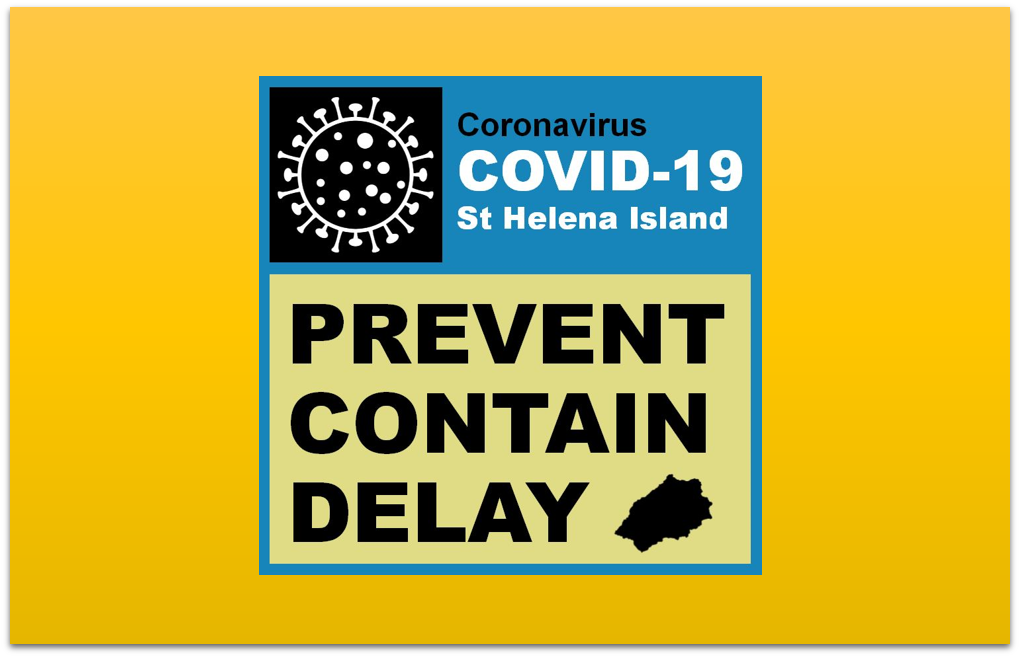13 January 2021
Since the outbreak of COVID-19, the Incident Executive Group (IEG) have regularly prepared, implemented and reviewed plans and procedures for St Helena’s defence against the virus. Here we look at the Health Directorate’s plan of action should a positive case of COVID-19 present during home quarantine on St Helena.
Arrangements remain in place for mandatory testing before departure for St Helena, testing on arrival, and at the end of the mandatory 14 days of quarantine. Every effort is being taken to ensure, should an arrival to the Island test positive for COVID-19, that this is contained in quarantine.
Illness or symptoms to be reported
If a person in home quarantine falls ill or presents symptoms, it is important that this is communicated to the Health Directorate. This could be done through their daily telephonic check in, or through contacting the General Hospital and speaking to the Doctor on duty. In milder cases, assessments can often be made through a series of questions conducted via telephone.
In more serious cases however, for example if the person has difficulty breathing, it might be necessary to call 911 and to have health professionals attend the person at home. When calling 911, the person should advise the operator that they are in quarantine. In any case, the ambulance crew will carry appropriate Personal Protective Equipment (PPE) which they will don before entering the home under quarantine.
The doctor involved in assessing the case will consult with the Senior Medical Officer on the next steps. The Senior Medical Officer will have the ultimate decision on how to manage that case.
What if someone does not present symptoms?
It is possible for someone to have contracted COVID-19 but to be free from any symptoms. This means that they are asymptomatic but they are able to infect others. If an asymptomatic person is identified prior to travel, they will be denied access to the repatriation flight.
In the case of an asymptomatic patient being identified at the end of quarantine, they and their family in quarantine with them, who would have travelled with them, will not be released from quarantine. A different testing regime is in place for this scenario. The whole of the household will remain in quarantine until each person has two negative test results, done 48 hours apart.
Positive mild symptomatic or asymptomatic cases could continue to isolate at home
A person that tests positive for COVID-19, could complete their quarantine at home if they are in quarantine alone and if their symptoms are mild (or they have no symptoms). They will be remotely monitored for deterioration by health professionals.
A person who tests positive for COVID-19 and who is quarantining with others in the household, but is well enough to remain at home would be advised to Isolate themselves from the rest of the household, have NO physical contact with any other person(s) within the household and to maintain good and regular disinfection of surfaces.
During the Home Quarantine property assessments, the Health Directorate ensures that homes used for quarantine provide the physical capacity to isolate a symptomatic patient from the rest of the household.
If this kind of isolation from the rest of the household was not possible the person would be moved to the Bradleys Hospital facility.
Positive serious symptomatic cases transported to Bradleys Hospital facility immediately
In the case of a person who has tested positive for COVID-19 and who is experiencing serious symptoms:
- The person will be immediately transported by medical staff to Bradley’s Hospital facility for medical attention
- Protocols are in place for the use of PPE for each stage of the journey from the person’s home to Bradleys Hospital facility
- Further protocols are in place for providing care at Bradleys Hospital facility.
- The patient would then remain at Bradley’s facility until fully recovered and confirmed negative for COVID-19
Contact Tracing
In the event that a person tests positive for COVID-19, it is then necessary to assess their most recent contacts. Contact tracing is a process that allows officials to determine whether others have potentially been exposed to COVID-19. On St Helena this process is managed by the Police Directorate in collaboration with the Health Directorate.
A close contact is identified as someone who has been within 1m of the person that has tested positive for COVID-19 for a sustained period of time (15 minutes or more).
If a contact is identified, it will be necessary for that contact to be tested for COVID-19. The Health Directorate will require the individual to isolate until confirmed negative for COVID-19.
Medical staff to quarantine
All medical staff involved in delivering care at Bradleys Hospital facility will wear PPE and adhere to the guidelines in place. Those in constant contact with patients would be classified as contacts and would therefore have to quarantine at Bradleys.
Every effort continues to be made to reduce the risk of COVID-19 reaching St Helena through the testing regime and quarantine measures. However, should a positive case arise, protocols are in place to manage this and to minimise the risk of community spread.
Members of the public are encouraged to respect those persons in home quarantine, but to report any concerns of a suspected breach of quarantine to the St Helena Police.
#StHelena #COVID-19 #HomeQuarantine
SHG
13 January 2021
